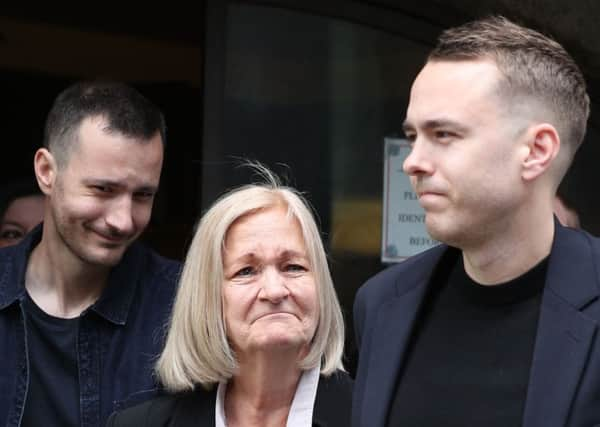Why Sally Challen’s release is not a licence to kill – Tom Wood


But, as in many cases of domestic murder, it turned out to be a lot more complicated than that.
Sally had been the victim of coercive control, a form of psychological warfare, for all the years of her marriage – mental cruelty we used to call it. Her husband had systematically humiliated and degraded her, crushing her will and destroying her self-esteem.
Advertisement
Hide AdAdvertisement
Hide AdHer lawyers rightly sought to overcome her murder conviction and the court rightly granted her appeal on the grounds that the evidence of her treatment had not been led at the original trial. It was a good day for justice and her conviction was set aside, a reduced charge was accepted and because of time already served she was released.
The case was rightly heralded as an important step in fully recognising the damage caused by what we now recognise and define as coercive control. Observed close up, it is truly awful to see someone psychologically beaten to the extent that their spirit is broken – you may not be able to see the bruises but the mental scars are long lasting.
I came across a case recently that serves as a perfect example of the long-term consequences.
The victim, long removed from their toxic relationship, continues to suffer ongoing mental and physical health problems. Extensive and costly treatments have helped but, like Sally Challen, I suspect the victim I know will be marked for life.
It’s not before time that we recognise the long-term damage that coercive control can cause and it’s right that it has been accepted into our legal framework. There’s only one snag. Coercive control is being seen, and I quote, “as a watershed for women in the criminal justice system”. Like domestic violence itself, there is still a powerful lobby that sees the issue simplistically as one of female victims and male perpetrators.
Common sense tells us that it’s not that simple of course. For while female victims of domestic violence and coercive control are in the great majority, there exists a sizeable minority of male and non-binary victims.
To pretend otherwise, let alone form policy based on this fallacy, is simply wrong-headed. The victim I described earlier in this piece was a man and the perpetrator a woman, his wife. There were no mitigating circumstances, no “he had it coming” justification, the victim is an intelligent professional man with no criminal history.
Advertisement
Hide AdAdvertisement
Hide AdDomestic violence and the coercive control that often accompanies it are not exclusive to one gender, women are not always the victims and until our policy makers recognise this, comprehensive solutions to this corrosive social problem will continue to elude us.
The case of Sally Challen was good news for all victims of coercive control regardless of their gender. We speak about equality a lot in Scotland, we like to think of it as one of our founding principles. Treating all victims of domestic violence with the same dignity, care and level of service is a good example of what equality is really about.
Tom Wood is a writer and former senior police officer. He is chair of Abused Men In Scotland